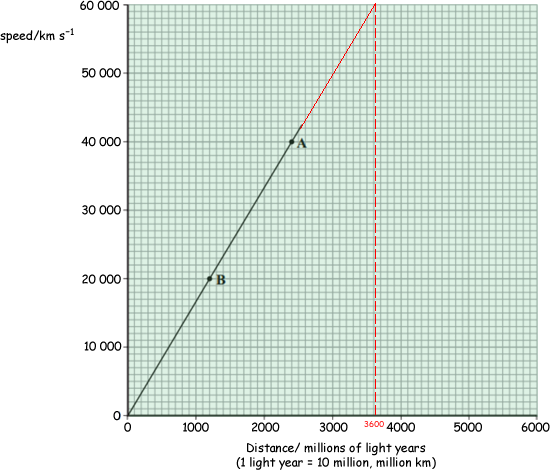GCSE level questions on the Earth in Space
Q5. The visible part of the electromagnetic spectrum from a star includes a dark line. This line is at a specific wavelength. The diagram shows the position of the dark line in the spectrum from the Sun and in the spectrum from a distant galaxy.

(a) Explain how the spectrum 'shift' of the dark line supports the theory that the Universe began from a very small point. (3 marks)
The line shifts towards red end of spectrum. 
The wavelength (appears) to increase.  Do not accept ;the universe is expanding'
Do not accept ;the universe is expanding'
This means the galaxy is moving away (from the Earth) 
(b) From data collected, a graph can be drawn that links the speed of a galaxy with the
distance of the galaxy from the Earth.

(i) How does the visible light spectrum from galaxy A look different from the visible light spectrum from galaxy B? (1 mark)
Light from A has a greater red shift or light from A is more red. 
(ii) A third galaxy, C, seems to be travelling away from the Earth at about 60 000 km/s. Estimate how far galaxy C might be from the Earth in millions of light years , showing how you use the graph to do this. (2 marks)
3600 million light years  - see the graph
- see the graph 
(c) Astronomers use telescopes to observe distant galaxies. Since 1990 the Hubble optical telescope has been in orbit around the Earth. Explain why an optical telescope in space allows astronomers to see further and more clearly than an optical telescope on Earth. (2 marks)
Earth's atmosphere/clouds cannot distort/block signals/light from space.
Space telescopes are more sensitive to weak signal/light therefore they pick up more information.









